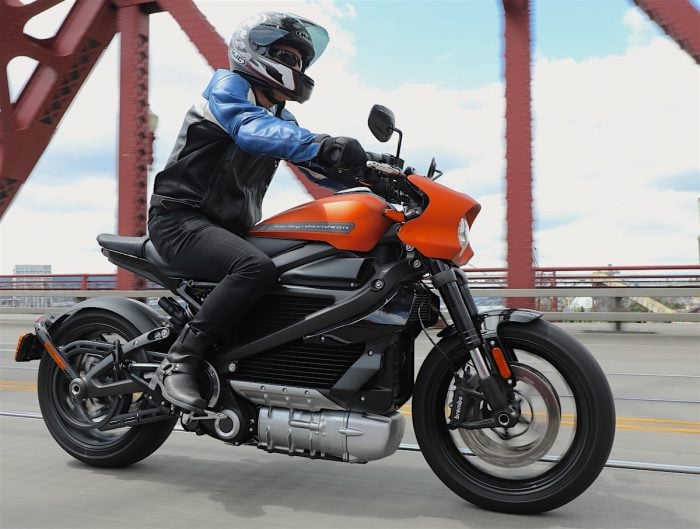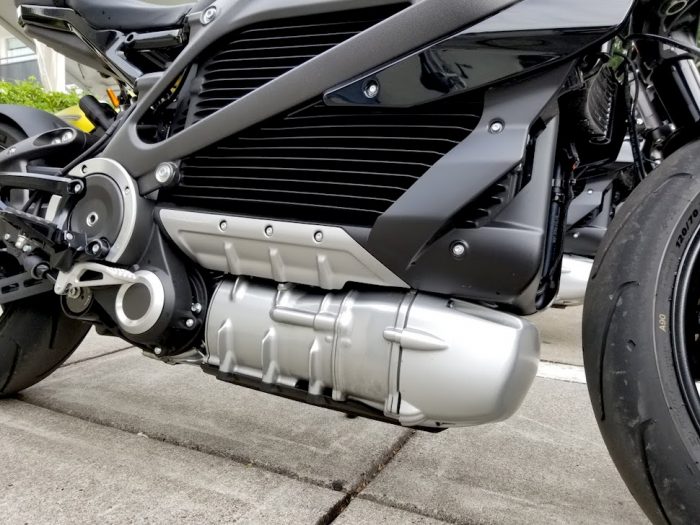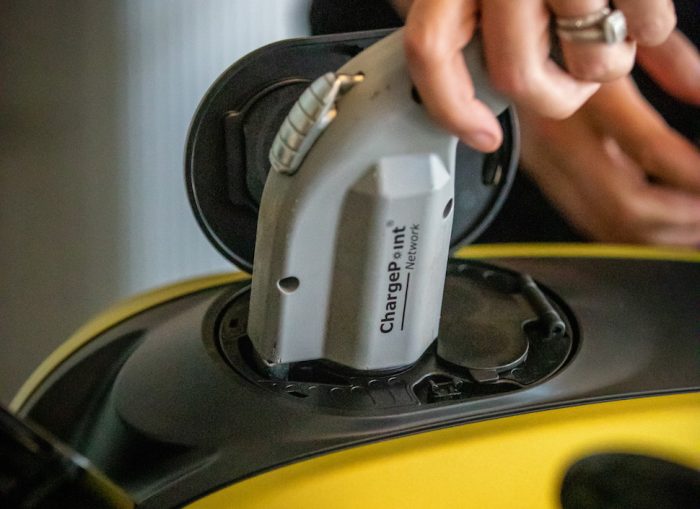Portland, OR – Seldom has there been more hype about a new motorcycle than with Harley-Davidson’s LiveWire. Fully five years ago, I was among the lucky few who got to sample a prototype – albeit under sedate escort – during the LiveWire Project phase.
Now, the real thing is finally here—beating other major bike-makers to the EV punch (we’re looking at you, BMW). It not only lives up to its promise but also provides a tantalizing taste of a future free of Harley’s patented potato-potato-potato internal combustion rumble.

Think of Harleys, and chances are you’ll think of bulky machines that equated quantity with quality. If bigger is better, then Harleys have for years put emphasis on pure iron. Aftermarket mods accentuated the image, especially for the “you-won’t-hit-me-if-you-hear-me” riders who went to straight pipes. While I appreciate the sentiment, it’s never been my cup of tea.
The LiveWire repudiates that past, with a relatively light, remarkably quiet and devastatingly fast machine.
Styling & Features: LiveWire’s engine & battery setup

There is much to admire in this electric bike, which reaches buyers nine years after the company authorized a small team to play in the EV field. The LiveWire is beautiful in an ultra-modern kind of way, and certainly unlike anything that has ever come of out of Harley’s assembly plants in York, Pa., or Milwaukee, Wis.
Its massive Samsung lithium-ion battery is partially concealed under a fake gas tank that houses the charging port. Its electric motor is slung low and long, echoing Harley’s emphasis on the engine as a visual focus. Its five-inch colour touch screen is simple and clear, and its switches are where they can be found on any Harley.
Rechargeable battery big in size

Accents on this very modern looking sport bike are designed to recall Harley styling traditions, including the classic logo, and a low-slung motor. The tank and aluminum frame downplay the massive 220-pound battery, which Harley calls a Rechargeable Energy Storage System (RESS).
The centre of gravity is high because of the tall RESS. It is air cooled and wrapped in a rigid cast aluminum frame. The bike has adjustable suspension components by Showa, of Japan, with mechanically adjustable damping and rebound, and a monoshock in the rear. The passenger seat pad is so tiny, however, only the skinniest butts will be willing to double up.
Performance and Handling: how does Harley’s electric bike manage on the roads?
Riding the LiveWire turns the numbers into reality. It is an incredibly fast and agile machine.
The electric motor produces 105 horsepower and 86 lb.-ft. of instant torque that launches the 550-pound machine with frightening intensity. With no gearbox, it provides a constant surge of power that propels it from 0 to 60 mph (97 km/h) in just 3.0 seconds, according to the company.
The only sound is the wind tearing at your helmet and a whine engineered into the vehicle.
Riding impressions
The LiveWire offers seven riding modes, including normal, rain and eco. My favourite was sport because the acceleration is aggressive and so is the stopping: powerful regenerative braking slows the bike down rapidly when you let off the throttle. Diving into corners at speed, the rider barely needs to touch the brakes, even though the front is equipped with beefy Brembo dual discs.
Safety features
Harley-Davidson’s safety systems – collectively known as the Reflex Defensive Riding System – includes traction control, anti-lock braking, rear-wheel lift mitigation under hard braking, and modes that be adjusted to weather conditions. The rain mode trims torque and regenerative braking to reduce the risk of slipping on wet roads.
The company also promises an online/smart phone compatible communication system by Aug. 20. Buyers will get a one-year free subscription to H-D Connect, which will provide service reminders, a charging station locator, Bluetooth connectivity, and even send a signal to your smart phone if someone is tampering with your bike. Dealer-serviced software upgrades are promised.
LiveWire’s range & charging duties
Range is rated up to 146 miles or 235 km in the city, but drops significantly under hard riding, and highway range is rated at 152 km. The bike can be charged overnight at home on standard household electricity, or topped up in an hour or less using a DC fast charger (also known as Level 3).

Note for Canada: Most Canadian cities are adding Level 3 chargers, and 17 of the 69 Harley dealerships in Canada will have them available for LiveWire owners (and free for the first two years).
Harley says EVs will help woo non-traditional riders to motorcycling.
“We aren’t building motorcycles,” said Harley CEO Matt Levatich. “We are building riders.”
Takeaway: is H-D’s new electric motorcycle worth it?
Part of the appeal is ease of entry for new riders, says Ben McKinley, manager of industrial design, electric vehicles, at Harley-Davidson. EV bikes eliminate the need to learn how to use a clutch and shift gears. New riders can just twist the throttle and go.
“Motorcycling can be intimidating for a lot of people, and when you add that level of complexity it doesn’t really help,” McKinley says. “So, if we can deliver something that’s a pure experience, the twist-and-go aspect of it, you’re going to learn how to ride, learn how to lean. You’re not going to have to mess with the rest of it right away.”
How much does the 2020 LiveWire cost?
Yet the LiveWire’s $29,799 starting MSRP in the United States and $37,250 price tag in Canada makes it anything but accessible for most young buyers. McKinley says the LiveWire is the “halo” motorcycle – the expensive, premium EV bike aimed at “the early adopter, somebody who wants the best of everything.” The EV bikes that follow will be “thousands” cheaper.
Company representatives insist they remain committed to developing traditional touring motorcycles powered by internal combustion engines. But they also know their core buyers are aging, and will soon stop buying motorcycles. The next generation of buyers will have vastly different needs and priorities.
EV bikes eliminate the need to learn how to use a clutch and shift Gears. New riders can just twist the throttle and go.
“LiveWire is the tip of the spear,” McKinley says. Less powerful and cheaper EV bikes under development will be aimed people who know how to ride a bicycle. “Almost anybody is going to be able to hop on one of those bikes and ride it,” he says. “If you know how to ride a bicycle, then this is the logical next step.”
EV bikes are just now coming onto the market at scale. As a sport bike for a “reasonable” price, only Zero’s SR/F could be described as competition in the same postal code – and tiny Zero can’t compete with Harley on the dealer network side.
The LiveWire is no flavour-of-the-month dalliance for Harley; this is the future. “We will lead the electrification of the sport,” says Nik Ellwood, international public relations lead.
Release Date: availability across the United States & Canada
Yet, all not all Harley dealers are ready to make the leap. In the US, pre-orders are open at authorized dealers with delivery to begin in August 2019.
Only 17 dealers in Canada have confirmed they will carry the LiveWire are accepting orders now. Deliveries in Canada are to begin in mid-September.


